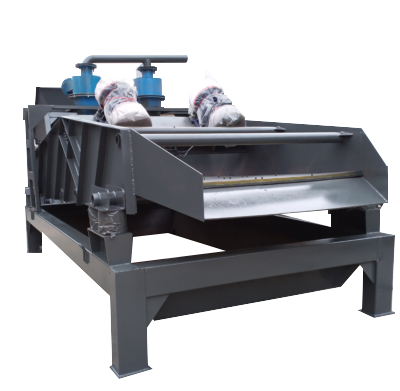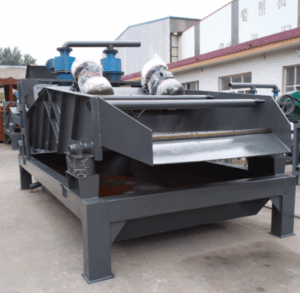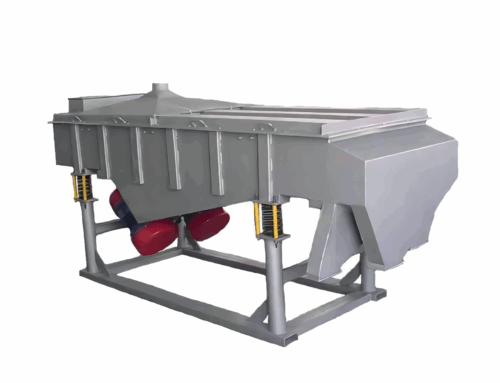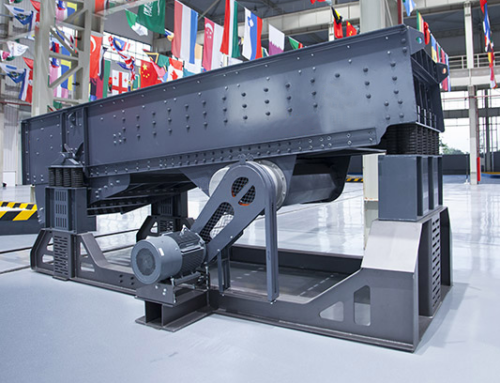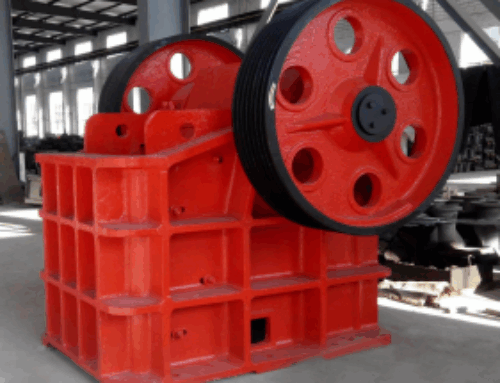In industrial production, high-frequency dewatering screen, as an important screening equipment, is widely used in mining, coal, building materials and other fields, and its output directly affects the production efficiency and enterprise economic benefits. Therefore, an in-depth understanding of the factors affecting the output of high frequency dewatering screen is of great significance to optimise the production process and improve the performance of the equipment.
一.Influence of material properties on yield
1.Particle size composition
The particle size composition of the material is one of the key factors affecting the productivity of HF dewatering screens. When the material has a high content of fine particles, the productivity of the HF dewatering screen will usually be larger because the fine particles can pass through the screen holes more easily. Conversely, if the material has a high coarse grain content and exceeds the screen’s aperture range, these coarser materials take longer and require more vibratory energy to penetrate the screen, which results in a decrease in overall production. For example, in coal screening, if the content of fine coal with -0.5mm particle size in the raw coal accounts for a large proportion, the high frequency dewatering screen will be relatively easy to deal with, and the output can be maintained at a high level; and when the raw coal contains more lumps larger than the size of the screen holes, the screen machine needs to spend more time to crushing and screening of these large pieces of material, and the output will naturally be affected.
2.Humidity
The impact of material humidity on the output of high-frequency dewatering screen is more significant. In general, when the material humidity is large, the cohesion between the particles is enhanced, and it is easy to form agglomerates, resulting in poor material mobility, which in turn clogs the screen holes, reduces the screening efficiency, and the output decreases. However, the size of the screen mesh aperture will have a difference on the degree of influence of humidity. Usually, the larger the mesh size, the relatively smaller the impact of moisture. For wet materials with high moisture content, in order to improve the screening process, the mesh size can be increased or a wet screen can be used. Taking kaolin dewatering as an example, due to the high humidity and strong viscosity of kaolin, if ordinary screen and screening method is used, it is very easy to cause clogging of the screen holes, and the output is very low; while using larger aperture screen and combining with the wet sieving process, it can effectively reduce the material agglomeration, improve the screening efficiency, and increase the output.
3.Mud content
The mud content in the material is also a factor that can not be ignored. When the material contains a large amount of mud (general mud content greater than 8%), the mud will form a layer of sticky film on the screen surface, hindering the normal permeability of the material through the screen, seriously affecting the output of high frequency dewatering screen. At this time, wet screening is a more effective solution. Wet screening can use the flushing effect of the water flow, the mud and fine-grained materials together through the screen, reduce the mud attached to the screen surface, thus improving the output. In the process of gold mine tailings dewatering, if the mud content in the tailings is high, without wet screening, the tailings particles will be wrapped by the mud, difficult to pass through the screen, resulting in a significant reduction in the output of the dewatering screen; and after the adoption of the wet screening process, it can effectively separate the mud and tailings particles, and improve the dewatering efficiency of the tailings and the output.
4.Particle shape
The particle shape of the material will also have an impact on the output of high-frequency dewatering screen. Under normal circumstances, the vibrating screen mesh is mostly square. When the shape of the production material is irregular, bar-shaped or cylindrical, compared with spherical particles, these shapes of materials are more prone to clogging, thus affecting the production efficiency. For example, in the quartz sand screening process, if the quartz sand particles are irregularly shaped, with more long stripes or flaky particles, they will easily get stuck in the sieve holes during the screening process, preventing other materials from passing through and leading to a drop in production. For this situation, users can consider using new swing vibrating screen and other equipment more suitable for processing irregularly shaped materials to improve the output.
二.Influence of the equipment itself on the output
1.Effective screening area
Different high-frequency dewatering screen in the design and production of different parameters, including the effective screening area of the screen surface is an important parameter. Effective screening area refers to the ratio of the area of the sieve holes to the area of the entire screen surface, the higher the ratio, meaning that the amount of material that can pass through the screen in a unit of time is more, the higher the output. When choosing high-frequency dewatering screen, the equipment with large effective screening area should be chosen as much as possible to improve the production efficiency.
2.Screen size
Screen size is the mesh of the screen, which refers to the number of holes in the unit area. Generally speaking, the smaller the mesh of the screen, the larger the size of the screen, the faster the material passes through the screen, the higher the output. However, in actual production, the selection of screen size needs to consider the production requirements, not just for the pursuit of yield and ignore the screening accuracy.
3.Equipment structure design
Reasonable equipment structure design can improve the efficiency of the movement of materials on the screen surface, thus increasing the output. For example, some high-frequency dewatering screen adopts special screen surface structure, such as V-shaped screen surface design, this design can make the material form a certain climbing angle on the screen surface, increase the contact time between the material and the screen mesh and the probability of sieve through the screen, improve the effect of dewatering and screening, and then improve the output. At the same time, the feeding method and outlet design of the equipment will also affect the output. Uniform and stable feeding can ensure that the screen surface is uniformly stressed to avoid the accumulation of local materials affecting the screening efficiency; spacious and smooth outlet can reduce the residence time of the material in the sieve machine, accelerate the discharge speed of the material, and improve the output.
三.Influence of operating parameters on output
1.Motor power
As the power source of high-frequency dewatering sieve, vibrating motor is an indispensable part of the equipment. The size of the motor power directly affects the strength of the excitation force, and the excitation force is closely related to the production volume. In most cases, an appropriate increase in motor power can improve the excitation force, so that the vibration of the material on the screen surface is more intense, accelerating the stratification of the material and through the sieve, so as to achieve a higher production rate. However, it should be noted that the size of the high-frequency dewatering sieve and the motor power should be matched, excessive increase in excitation force will cause greater impact on the structure of the equipment, reducing the service life of the equipment.
2.Vibration frequency and amplitude
Vibration frequency and amplitude are important operating parameters of high-frequency dewatering screen, and they have a significant impact on the output. High-frequency dewatering screen adopts the mechanical characteristics of high frequency and high vibration intensity, which can destroy the tension on the surface of the slurry and the adsorption force of fine-grained materials on the screen surface, and accelerate the separation and permeability of materials. Through experimental research shows that, within a certain range, the appropriate increase in vibration frequency can increase the probability of less than the separation size of the material and sieve hole contact, thus improving the output. However, when the frequency is too high, the residence time of the material on the screen surface is too short, which may lead to part of the material not being able to be discharged through the screen, but reduce the output. Amplitude is the same, the appropriate amplitude can make the material in the screen surface fully jumping and tumbling, is conducive to through the screen; and amplitude is too large or too small are not conducive to the screening and dewatering of materials.
3.Equipment inclination
For square vibrating screen and other high-frequency dewatering screen with a certain inclination angle, the inclination of the equipment also has an impact on the output. The appropriate inclination can help the material on the screen surface natural decline, and at the same time with the help of vibration to achieve a better screening effect. If the inclination is too small, the material moves slower on the screen surface, which will affect the output; while the inclination is too large, the material may pass through the screen surface quickly, too late to fully screen, also leading to a reduction in output. Generally speaking, the inclination angle of the screen surface of high frequency dewatering screen is usually between – 3° ~ -5°, the specific value needs to be adjusted according to the nature of the material and production requirements. For example, when dealing with materials with good fluidity, the inclination can be appropriately reduced to prolong the residence time of the material on the screen surface and improve the screening accuracy and yield; while for the viscous material with poor fluidity, the inclination can be appropriately increased to promote the movement of the material.
The high and low output of high frequency dewatering screen is affected by the comprehensive impact of various factors. In actual production, these factors need to be comprehensively analysed and reasonably controlled, through the optimization of material pre-treatment, selection of suitable equipment and operating parameters, to improve the output and production efficiency of high frequency dewatering screen, to create greater economic benefits for the enterprise.

